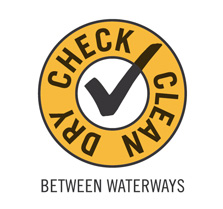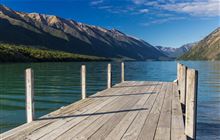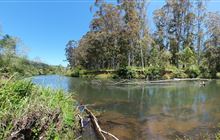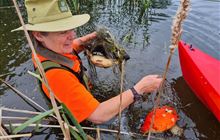Help stop the spread of lindavia
Introduction
Lindavia is an invasive freshwater alga that produces a sticky mucus known as ‘lake snow’. We need your help to stop it affecting more of our lakes and tarns.How Lindavia affects our lakes
Lindavia (Lindavia intermedia) is a microscopic alga but under certain conditions it produces a sticky, slimy or mucus-like material known as lake snow.
Lake snow can affect recreational activities as it sticks to fishing lines, lures or boat hulls. It can also stick to waterway equipment, wetsuits, skin and hair.
It may cause problems for residential water uses by causing blockages and clogging filters.
Lake snow is not toxic to humans or livestock and poses no risk from food sourced from affected lakes.
The potential impacts of lindavia on the ecology and health of lakes and freshwater species are not known. DOC is working with scientists and other agencies to monitor and research lindavia.
Where lindavia is already present
Lindavia was first found in New Zealand in 2002. It is now in several lakes in Otago, Canterbury and Waikato (North Island).
In the upper South Island, it is only present in Lakes Rotoiti, Rotoroa and Tennyson, the Buller River and the Maitai reservoir near Nelson.
In some lakes, such as Lake Wānaka, lake snow is regularly formed and is a significant nuisance. In others it only appears occasionally.
How does it spread?
Because it’s microscopic lindavia can be spread to a new area in just one drop of water.
Wet boats, trailers, clothes, boots, socks, drink bottles and swimming or fishing gear can all harbour the alga. It could then be washed out when entering a different lake or river.
There are no known control or eradication methods for lindavia, so we need to prevent the spread to protect our waterways.
Help stop lindavia spreading

Check, Clean, Dry to help prevent the spread of freshwater pests
Travel clean – Check Clean Dry any gear that comes into contact with the water, between every waterway, every time.
- Check: Remove any algae or plant material from your gear – leave it at the river or on the lake bank or put it in the rubbish. Don't wash it down the drain.
- Clean: Use a mix of 10% dishwashing detergent and 90% of water, then soak or spray all items and leave for 10 minutes before rinsing.
- Dry: Make sure your gear is completely dry to touch inside and out, then leave it dry for at least another 48 hours before you use it again.
More cleaning methods, including for large items.
Keep wet gear, including boots, swimming togs and drink bottles out of other waterways. Think back to when you were last in contact with lake water. If in doubt, stay out.
In Nelson Lakes National Park
Use a biosecurity cleaning station at Coldwater Hut, Lakehead Hut and Sabine Hut to disinfect any boots, socks, clothing, towels or drink bottles that are wet or damp from lake or river water.
Report a sighting
Lake snow is unlike any other alga because it floats in the water column below the water’s surface. It does not attach itself to rocks.
If you spot lake snow in areas where it has not been detected yet, take a photo and report it to your local DOC office.
Download our lindvia brochure (PDF, 800 K)



